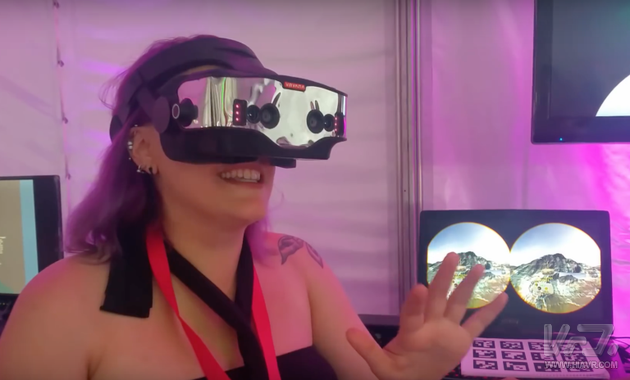Foreign media reported that Apple recently acquired a company called Vrvana, a startup based in Montreal, Canada. Vrvana developed the Totem helmet, which received a good rating but did not ship. Two people familiar with the matter said that the purchase price is about 30 million US dollars.
Apple declined to comment on this, but it did not deny the report. Foreign media inquired about Vrvana, the company did not respond. However, two sources said that Apple has indeed acquired Vrvana.

This acquisition transaction is of great significance. There have been many reports and rumors before that Apple intends to develop AR hardware. However, Apple has a tight-knit tone and generally does not disclose any news about new future products. The acquisition may tell us what Apple wants to develop.
Many of Vrvana's employees will join Apple. The current Vrvana website is still operational, but social accounts and news will no longer be updated from August this year. Vrvana cooperated with Valve, Tesla, Audi and other companies. It developed products, formulated product roadmaps, and operated some businesses. It did not know which parts would be included in the Apple system.
On the Vrvana website, the company only showed one product, the unreleased Totem helmet, which is an "extended reality" device that uses some of the key systems of AR and VR and can be used in a helmet. There are two kinds of experience inside.
Totem is a wired helmet that looks very similar to many of the VR helmets we see today. It is unique in that Totem uses several forward penetrating cameras to replicate the outside world on the helmet's internal OLED screen. The camera system supports 6DoF tracking. 6DoF is an advanced technology that allows the device to track its position in 3D space. The system also uses an infrared camera to track the user's hand.
Vrvana AR technology is based on cameras, which are different from competitors such as Microsoft, which installed transparent, projection screens in its HoloLens helmets. Compared to other systems, the Totem helmet has some advantages. For example, it can overlay true opaque animations on the real world. Other helmets can only project ghost-like images and cannot display black. Because of this, Vrvana can integrate VR and AR for seamless switching.
Although there are many advantages, this system also has a significant drawback (does not consider the shortcomings of bulkiness). The camera must capture the image of the outside world and then quickly display it on the screen inside the helmet, there will be a significant delay between the two. This summer, the CEO of Vrvana explained that the company is developing prototype products that can reduce latency to 3 milliseconds.
In the "extended reality" field, there have been some consumer applications, but Vrvana's focus is on applying technology to businesses. Vrvana introduced in the helmet’s promotional materials that Totem uses hand tracking technology and “inside-out†location tracking technology, which users can use at work to control multiple virtual objects by hand.
Apple also wants to expand in the corporate market. In August, Apple CEO Cook had hinted that the company is a key focus of the Apple AR plan. In 2015, Apple had published corporate sales data. At that time, Cook had said that if this part of the business was separated out, it was a large business of $25 billion. Since then, Apple has not released new data.
It is very difficult for start-ups to expand their businesses, and hardware companies are particularly difficult. Moreover, AR is still an emerging technology that does not go mainstream. It is even more difficult for start-ups to develop.
Vrvana was founded in 2005. How much did it cost? The company did not disclose it. One source said that Vrvana’s financing amount is less than US$2 million.
Led Poster,Digital Led Poster,Led Light Poster,Led Poster Display
ShenZhen Megagem Tech Co.,Ltd , https://www.megleddisplay.com
